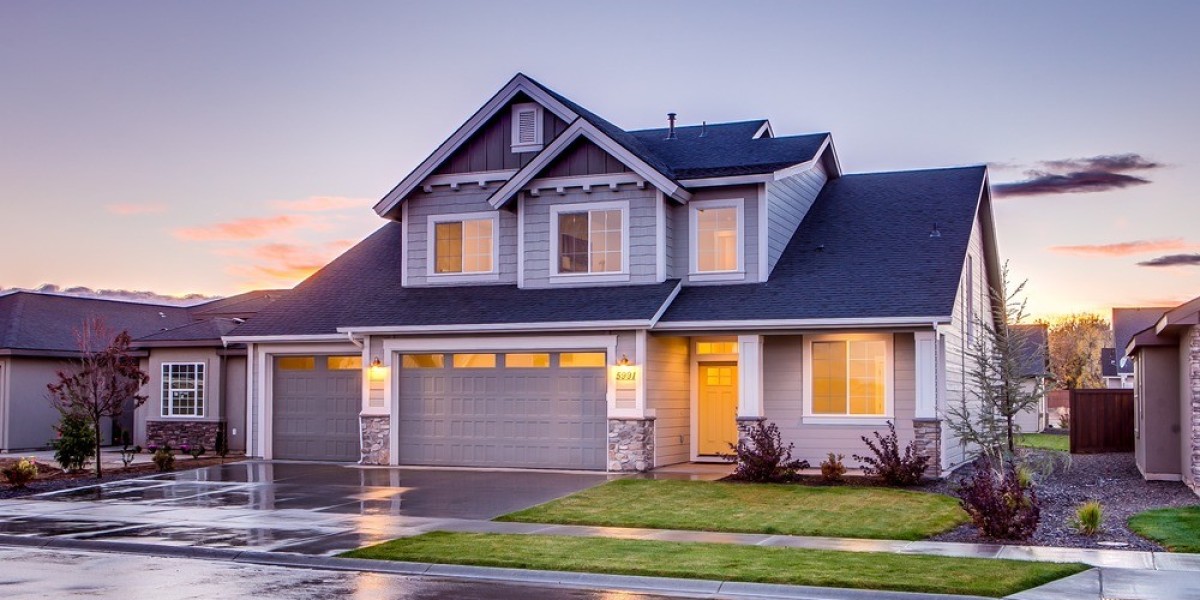Selecting the perfect roofing material for your installation is a critical decision that can significantly impact the longevity, aesthetics, and energy efficiency of your home. With a plethora of options available in the market, ranging from traditional asphalt shingles to innovative green roofing solutions, making an informed choice is essential.
In this blog post, we will guide you through the process of choosing the right roofing material for your installation. We will discuss the key factors to consider, compare various materials, and provide insights to help you make an informed decision that suits both your practical needs and personal preferences.
Importance of selecting the right roofing material
The importance of selecting the right roofing material cannot be overstated when it comes to the well-being and longevity of your home. Your roof serves as your first line of defence against the elements, and its choice affects not only the structural integrity of your house but also its energy efficiency, aesthetics, and overall value. The right roofing material can provide decades of protection and peace of mind, while the wrong one can lead to costly repairs, decreased energy efficiency, and diminished curb appeal. As homeowners, we invest substantial resources in our homes, and the roof is a major component of that investment. Therefore, making an informed decision about the roofing material is paramount to ensuring your home's long-term health and your own satisfaction as a homeowner.
Factors to Consider
1. Climate and weather conditions
One of the most crucial factors to consider when selecting a roofing material is the climate and weather conditions in your region. Different materials perform better in specific climates.
For instance, areas prone to heavy rainfall may benefit from materials that are highly resistant to moisture, such as metal or slate. In regions with extreme heat, materials with reflective and insulating properties, like metal and cool roofing options, can help regulate indoor temperatures. Understanding your local climate will ensure that your roofing material can withstand the elements and protect your home effectively.
2. Roof slope and design
The design and slope of your roof play a significant role in determining the appropriate roofing material. Some materials, like asphalt shingles, work well on steeply pitched roofs, while others, such as clay tiles or slate, are better suited for roofs with a gentle slope. Consider the architectural style of your home and the intended roof design to choose a material that complements it aesthetically and structurally. Additionally, certain roofing materials may require additional support or reinforcement, depending on the design, so factor in these structural considerations as well.
3. Budget and cost considerations
Your budget is a practical factor that can heavily influence your roofing material choice. Different materials come with varying price points, installation costs, and maintenance expenses. While some materials may have a higher upfront cost, they could save you money in the long run due to their durability and energy efficiency. Consider not only the initial investment but also the long-term financial implications, including potential energy savings and maintenance requirements, to make a cost-effective decision that aligns with your budget.
4. Energy efficiency and sustainability
As sustainability and energy efficiency become increasingly important considerations, roofing materials with green attributes are gaining popularity. Materials like metal, cool roofing, and green roofing options can help reduce energy consumption, lower utility bills, and minimize your carbon footprint. Evaluate the energy efficiency ratings and environmental impact of different materials to make an environmentally conscious choice that benefits both your home and the planet.
5. Aesthetics and curb appeal
The aesthetic appeal of your roofing material should harmonize with the overall look and feel of your home. Consider the color, texture, and style of the material to ensure it complements your home's architecture and adds to its curb appeal. Some materials, like clay tiles and cedar shingles, offer a unique and timeless appearance, while others, like asphalt shingles, come in a wide range of styles and colors to suit various design preferences.
6. Maintenance requirements
Every roofing material comes with its own set of maintenance requirements. Some materials, like asphalt shingles, are relatively low-maintenance and easy to repair or replace, while others, such as wood shingles, may require more frequent upkeep to prevent issues like rot or moss growth. Consider your willingness and ability to perform regular maintenance tasks or invest in professional services when choosing a roofing material. A material's long-term performance can be greatly influenced by how well it is maintained.
Incorporating these factors into your decision-making process will help you choose the ideal roofing material that not only addresses your practical needs but also enhances the aesthetic and functional aspects of your home. Careful consideration of these factors ensures that your roofing installation stands the test of time and provides you with the best possible value and performance.
Comparison of Roofing Materials
Asphalt Shingles
Pros and cons Pros:
Cost-effective and widely available.
Easy to install and repair.
Come in various styles and colors.
Suitable for a wide range of climates. Cons:
Limited lifespan compared to some other materials (typically 20-30 years).
Susceptible to damage from severe weather conditions.
May not be as energy-efficient as some alternatives.
Varieties available
Three-tab shingles: Affordable and basic design.
Architectural shingles: More visually appealing and durable.
Impact-resistant shingles: Offer better resistance to hail and wind.
Metal Roofing
Pros and cons Pros:
Exceptional durability, often lasting 50+ years.
Highly resistant to weather, including rain, snow, and hail.
Energy-efficient, reflecting sunlight and reducing cooling costs.
Environmentally friendly, as metal can be recycled. Cons:
Higher upfront cost compared to asphalt shingles.
Noise concerns during heavy rainfall or hail.
Some types may require professional installation.
Types of metal roofing
Standing seam: Features vertical seams and concealed fasteners.
Corrugated metal: Has wavy patterns and is commonly used for agricultural and industrial buildings.
Metal shingles: Resemble traditional roofing materials like wood or slate.
Tile and Slate Roofing
Pros and cons Pros:
Outstanding durability, with lifespans exceeding 100 years.
Timeless and elegant appearance.
Highly fire-resistant and environmentally friendly. Cons:
Heavyweight, requiring a sturdy roof structure.
Expensive to install and repair.
Limited availability in certain regions.
Aesthetic appeal
Tile roofing offers a Mediterranean or Spanish-style look.
Slate roofing provides a classic, natural appearance with various colors.
Wood Shingles and Shakes
Pros and cons Pros:
Natural and rustic aesthetic appeal.
Insulating properties.
Biodegradable and renewable material. Cons:
Susceptible to rot, insects, and fire (unless treated).
Requires regular maintenance and may need replacement sooner than other materials.
Can be expensive, especially for premium wood species.
Sustainability considerations
Cedar and redwood are commonly used due to their durability and resistance to decay.
Sustainable sourcing and treatment methods are essential to prolong the lifespan.
Green Roofing
Pros and cons Pros:
Energy-efficient, providing insulation and reducing heating and cooling costs.
Aesthetically pleasing and supports biodiversity.
Extends roof lifespan by protecting against UV radiation and extreme temperatures. Cons:
High initial installation cost.
Requires proper waterproofing and drainage systems.
Regular maintenance to ensure plant health.
Environmental benefits
Reduces urban heat island effect.
Captures rainwater and reduces runoff.
Enhances air quality by filtering pollutants.
Conclusion
In conclusion, selecting the perfect roofing material for your installation is a pivotal decision that can significantly impact the longevity and functionality of your home. Whether you prioritise durability, aesthetics, or energy efficiency, it's crucial to make an informed choice that aligns with your specific needs and budget.
While there are various roofing companies to choose from, if you're seeking excellence in roofing services, look no further than Orbit Home Services. With a proven track record of delivering high-quality roofing solutions, Orbit Home Services stands out as a top-notch home roofing company.
Their commitment to professionalism, expertise, and customer satisfaction makes them a trusted partner for all your roofing needs. So, when it comes to roofing your home, choose Orbit Home Services for unmatched quality and peace of mind. Your roof deserves nothing less than the best!








